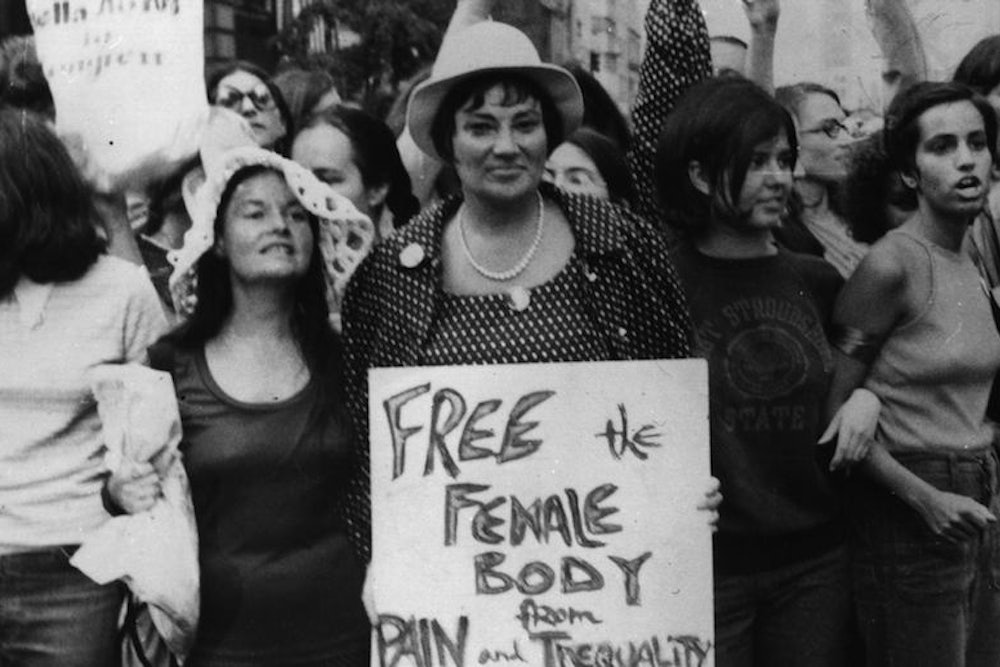Earlier this week in The New Republic, historian Sonya Michel sharply criticized the organization seeking to bruild a women's history museum in Washington. Michel lamented the disbanding of a panel of professional historians advising the musuem, and criticized what she described as amateurish, error-ridden, and anodyne content in an online exhibit and promotional museum.
Here, the museum's president responds to Michel's article.
Joan Bradley Wages, President & CEO, National Women’s History Museum, Inc.
After nearly twenty years of working to secure passage of legislation to move the National Women's History Museum forward, we are thrilled to be closer than ever to seeing this bill become law. With strong bi-partisan support in both houses and real momentum behind the legislation, I’m confident this is our year!
When the National Women’s History Museum opens its doors it will tell the story of women’s history and highlight the many contributions of women from all walks of American life. The effort to detail that history will be led by the museum’s curators, but like any museum, it will involve the contributions of historians and other experts whose skills and knowledge are absolutely necessary to telling an accurate and comprehensive story.
When we get to the point of discussing content of the museum we hope to partner with existing institutions like the Smithsonian and other world-class museums that have exemplary processes we could model to ensure the museum’s programs and exhibits are accurate, credible, relevant and communicated in ways easily understood by the general public.
As our effort to establish a Congressional commission has picked up steam, concerns about the content of the museum have been raised. These critiques provide us with the opportunity to have the discussion about how a museum should be built and moves us past the discussion of whether a museum should be built at all.
That’s why the National Women’s History Museum non-profit has shifted focus to educating the public about the need for a museum and meeting our large fundraising goals. The entire project will be funded without using a dime of taxpayer money—so it’s a massive undertaking.
Let’s leave the exhibit plan, location, governance and organizational structure up to the bipartisan congressional commission as have other successful museums, like the National Museum of African American History and Culture. Let’s not prejudge the museum’s directors, curators and historians, by criticizing the content they haven’t even had a chance to develop. Let’s work together to encourage and strengthen their efforts.
In its present state, the National Women’s History Museum is a small non-profit. We’re simply doing the best we can to tell the story of women’s history and lay the groundwork for a museum that every American can enjoy.
In place of a physical museum, we’ve worked to develop content for our website, which we’re constantly updating based on the input of historians and other experts. Where there are factual inaccuracies we’ve worked to correct them and where there are honest disagreements we’ve worked to incorporate diverse viewpoints. In spite of the harsh, and at times unfair, criticism that has been leveled by some, we remain committed to working to resolve legitimate concerns when they are raised. The good news is that almost everyone agrees that a National Women’s History Museum ought to be built. We are delighted with the great momentum behind our legislation and confident that a world-class museum honoring the remarkable achievements of women and their invaluable contributions to society will soon grace our nation’s capital.
Sonya Michel Responds
What is most troubling about Joan Wages’ response to my article is that she seems to assume that she and her non-profit organization will be the ones to lead the effort to build and operate a bricks-and-mortar museum, should the commission approve the project. While the NWHM is to be commended for its persistence in publicizing the need for a museum of women’s history and bringing the issue before Congress, this record does not in itself qualify the organization to create and operate a world-class museum. Wages refers to “our effort to establish a Congressional commission,” suggesting that the lawmakers have had no role in this process. The idea may well have come from NWHM, but surely the lawmakers now supporting the commission expect that it will operate independently and, in forming a new organization to create a museum, select a leader based on his or her professional qualifications and demonstrated ability to bring such a project to fruition.
Wages warns against prejudging “the museum’s directors, curators and historians, by criticizing the content they haven’t even had a chance to develop,” but in fact the NWHM has had a chance to develop content. Its website is there for all to see what a museum operated by this organization would look like. The NWHM has fallen short not because it lacks resources but because it has failed to develop effective relationships with historians and museum professionals, many of whom have been more than willing to work with them on a voluntary basis.
I agree with Wages that the bipartisan support the museum commission currently enjoys in Congress should not be squandered, but I hope that lawmakers in both houses will take the opportunity to improve their bills by ensuring that historians have a place at the table and making it clear that in order to move the project forward, the commission will have to start from scratch and create a brand-new organization based on recognized historical expertise and experience in museum design and administration.
